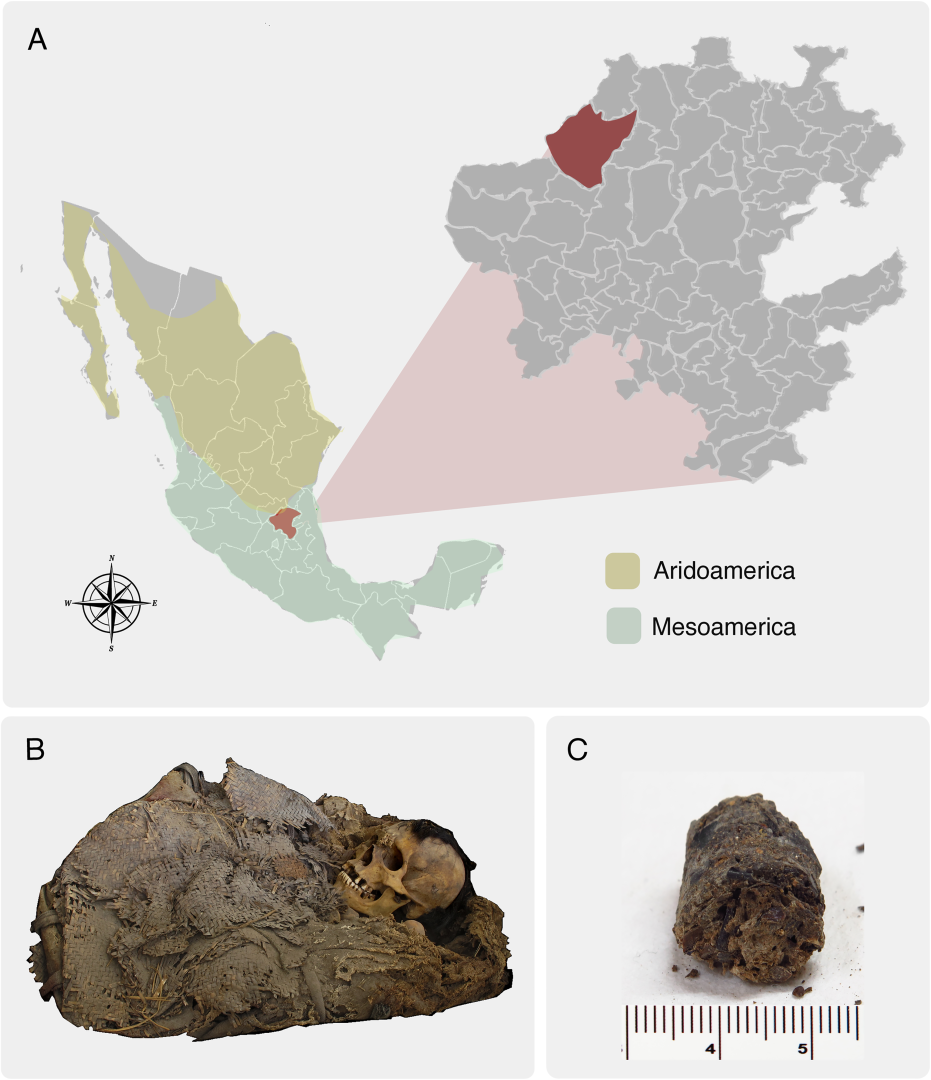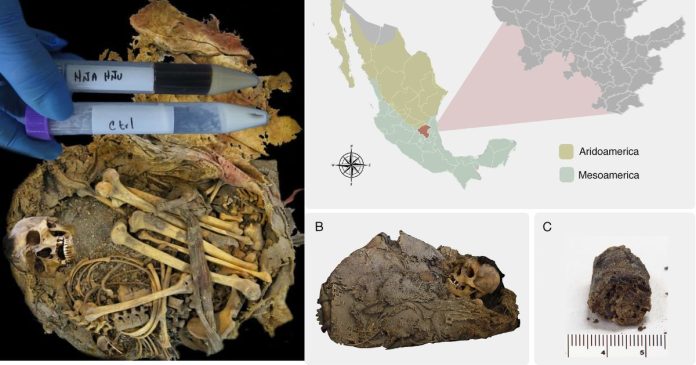Scientists have reconstructed the gut microbiome of a young man who lived around 1,000 years ago in pre-Hispanic Mexico. The analysis of his intestinal tissue and fecal remains revealed a unique mix of ancient and modern bacteria, shedding new light on how human gut ecosystems have evolved. The findings, published in PLOS One, come from researchers at the National Autonomous University of Mexico (UNAM).
Ancient Gut Microbiomes: Windows into the Past
The human gut microbiome consists of trillions of microorganisms that inhabit the intestines, influencing digestion, immunity, and overall health. While certain bacterial groups are shared across populations, each person’s microbiome varies based on diet, environment, age, and lifestyle. Studying ancient microbiomes allows researchers to trace how human diets and health changed through time — and how modern microbes evolved from ancient ones.
Recent studies have identified ancient microbiomes in Andean mummies and even in the famous “Iceman Ötzi.” This new study expands that record by analyzing exceptionally well-preserved remains discovered in a rock shelter near Zimapán, Mexico.

The accompanying map highlights Hidalgo in red and marks the exact recovery location within Zimapán. Brown and green shading indicate the regions of Aridoamerica (brown) and Mesoamerica (green), B) Mortuary bundle and remains of the Zimapán individual, and C) Samples of paleofeces from the Zimapán individual.
A Glimpse into a 1,000-Year-Old Life
Archaeological and prior genetic evidence suggests the individual was a hunter-gatherer belonging to the Otomi (Otopame) cultural group. He died between the ages of 21 and 35, roughly a millennium ago, before the Spanish conquest.
Using 16S rRNA sequencing, scientists analyzed bacterial DNA in both intestinal tissue and feces. They found bacterial families typical of human gut flora, such as Peptostreptococcaceae, Enterobacteriaceae, and Enterococcaceae.
Notably, a high concentration of Clostridiaceae was identified — bacteria previously observed in mummified remains from Andean civilizations. Even more surprising was the detection of Romboutsia hominis, a species previously found only in modern humans and never before documented in ancient microbiomes.
These results expand our understanding of microbial evolution and provide clues about the diet and lifestyle of early Mesoamerican populations.
Burial and Cultural Significance
The man’s remains were carefully wrapped — a detail that may indicate high social status. The outer layer consisted of a mat woven from long agave fibers, forming a flexible but durable rectangle. Beneath it was a perfectly woven sheet of local brown cotton, crafted using an advanced and intricate weaving technique.
Mathematical analysis of the textile knots revealed a complex pattern unique to the region. The burial wrappings have been under restoration for nearly eight years by textile conservator Luis Mainaú, who hopes to present the artifact to an international audience soon.
Key Takeaway
This rare discovery offers an unprecedented look into ancient gut ecosystems, bridging microbiology and archaeology. It reveals that some bacterial lineages in modern humans have persisted for millennia, surviving through vast cultural and dietary transformations — from the hunter-gatherers of ancient Mesoamerica to the modern world.
Source: Characterization of the gut microbiome of a pre-Hispanic individual from Zimapán, Mexico: Insights into ancient intestinal microbial communities.
PLOS One (2025)
You may want to read this: Elite 5,000-Year-Old Burial with Toucan Beak Found in Peru

